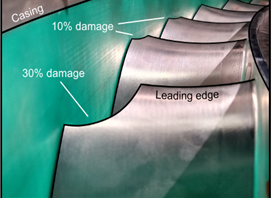A Reduced Order Model Framework for Operability Assessment of Damaged Blades
Advisor: Prof. Spakovszky, Dr. Tan
Characterizing aeroengine operability limits has been a challenge within the aerospace industry. Due to safety concerns, the performance degradation of damaged engines has been difficult to quantify through live testing and has relied upon computational fluid dynamics (CFD) simulations to assess operability limits. Due to the high computational cost of high fidelity CFD models, it is unrealistic to analyze and determine a comprehensive operability limit for the engines. This often results in replacing the entire part or engine that is considered damaged which results in high manufacturing and overhaul costs. To improve operability limits and potentially mitigate operating cost, a reduced order model (ROM) will be developed. The development of ROM that can capture the unsteady characteristics of damaged compressor blades will be used to demonstrate the robustness of an unsteady body force model (BFM) as a sound validation tool for improving performance and providing useful operability guidelines.
Figure 1 and 2 show the Energy Efficient Engine (E3) compressor and potential blisk damage of the compressor which will be used in this project.
Fig. 1 E3 Compressor Rotor Assembly.
Fig. 2 Example of Damaged Blade.


